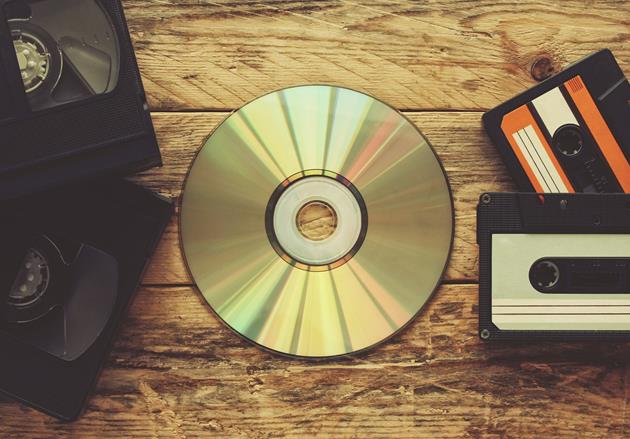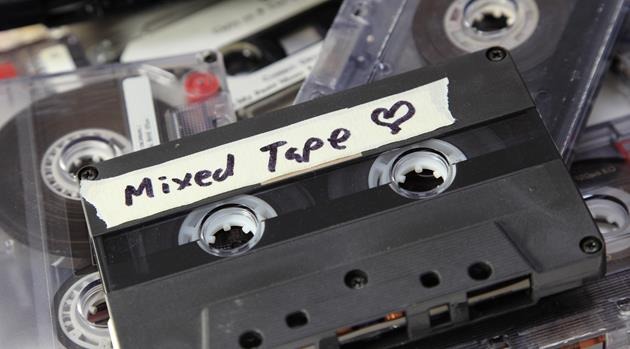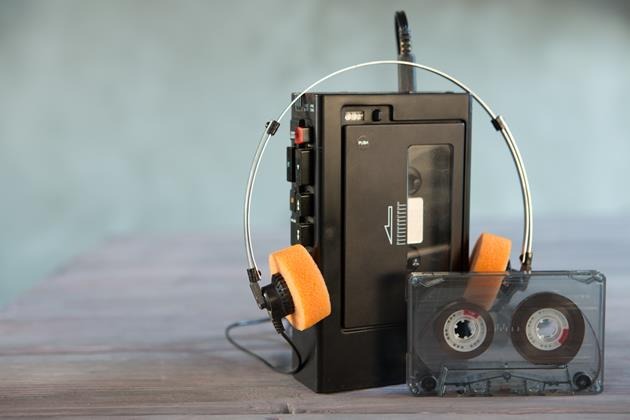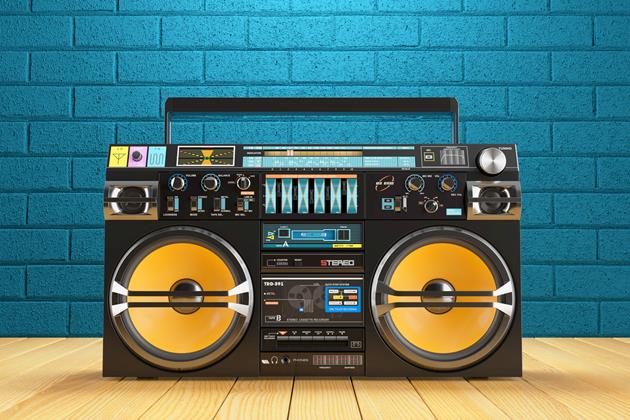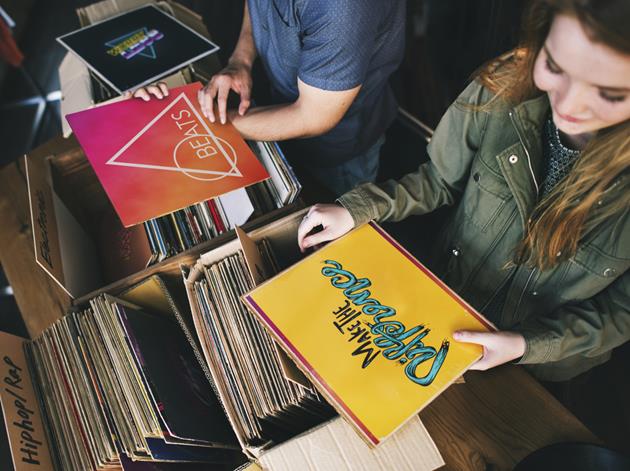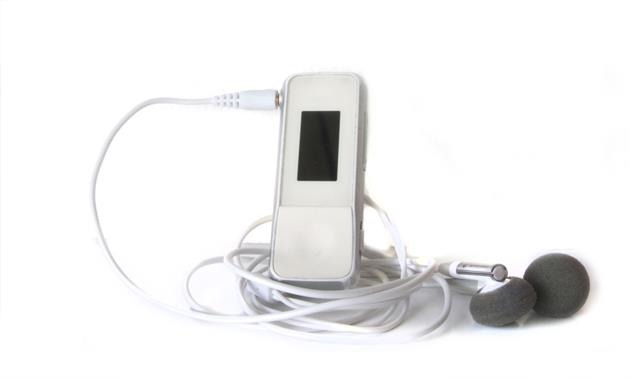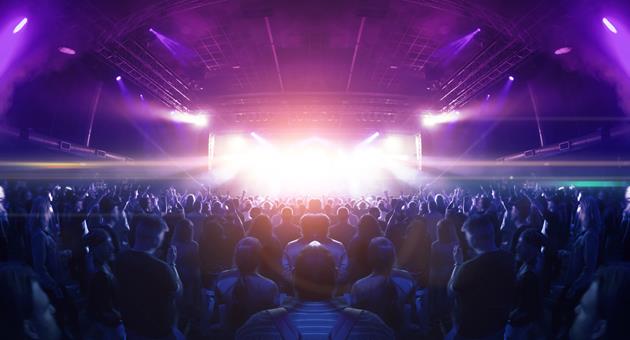In the 1990s, listening to music was a big part of people’s lives, just like it is today. But the way they listened to music was a bit different because technology was changing. This was the time when people moved from old ways of listening to music, like tapes, to newer ways, like CDs and even the early days of digital music.
While some music aficionados might have invested in some high-tech music systems back then, most people had relatively limited access to their favorite tunes as compared to today. We may not even have realized whether a track was playing in an MP3 format or something else. There were still quite a few platforms for musical enjoyment, though, so let’s take a look at these one by one. Let’s explore how people enjoyed their favorite tunes back in the 90s!
The Rise of Compact Discs (CDs)
The 1990s marked a significant shift in how music was consumed, largely due to the advent of the Compact Disc (CD). This new format revolutionized the music industry, offering clearer sound quality and a more durable medium compared to the cassette tapes and vinyl records that preceded it. CDs quickly became the preferred choice for music lovers, heralding the beginning of the digital age in music consumption.
Technological Advancements and Sound Quality
One of the most appealing aspects of CDs was their superior sound quality. Thanks to digital recording technology, CDs provided a listening experience free from the hisses and pops that often accompanied vinyl records and tapes. This crisp, clear sound made CDs highly sought after, as listeners could now enjoy their favorite songs in unprecedented clarity.
Portability and Accessibility
The introduction of portable CD players, like the Sony Discman, allowed music enthusiasts to take their music wherever they went. This level of portability was a game-changer, making it possible to listen to CDs on the go, whether commuting, exercising, or simply relaxing outdoors. The convenience of skipping tracks and the ability to hold up to 80 minutes of music on a single disc made CDs even more attractive to the consumer market. Alternatively, many students find that music helps them study, so having a proper system in their bedroom makes some sense.
Cassette Tapes and the Mixtape Culture
Even as Compact Discs (CDs) started to dominate the music scene in the 1990s, cassette tapes held a special place in the hearts of music enthusiasts. Their appeal wasn’t just in the music they played but in the personal and intimate experience they offered. Cassettes were more than a way to listen; they were a way to share, create, and express oneself through music.
The Art of the Mixtape
One of the most iconic aspects of cassette culture was the creation of mixtapes. Making a mixtape was a labor of love, a handmade gift that could express feelings, share new music discoveries or soundtrack a personal moment. Each mixtape was a unique compilation carefully curated by recording songs in a specific order to convey a message or emotion. This practice became a cherished form of communication among friends, lovers, and music aficionados, symbolizing a personal touch that digital playlists struggle to replicate.
The Role of Cassettes in Music Distribution
Beyond personal collections and mixtapes, cassettes played a crucial role in the distribution of music, especially in genres like hip-hop and alternative rock. Their affordability and ease of duplication made cassettes the perfect medium for emerging artists to distribute their music without the need for expensive production. This grassroots distribution network was instrumental in the spread of hip-hop culture and the rise of underground music scenes.
Cassettes in the DIY Music Scene
Cassette tapes also held significance in the DIY (do-it-yourself) music scene, where they became the medium of choice for indie bands and labels to release their work. The low cost of production and distribution made it possible for artists to release their music independently, fostering a vibrant indie music culture that thrived on creativity and community support.
The Walkman and Portable Music Revolution
In the late 1970s, the introduction of the Sony Walkman transformed the music listening experience, but it was during the 1990s that this portable music player reached new heights of popularity. The Walkman gave music lovers something they had never had before, which was the freedom to take their music with them wherever they went. This wasn’t just about listening to music in different places; it was about making music a part of everyday life in a way that had never been possible before.
The Personalization of Music Listening
The Walkman’s impact was profound because it made listening to music a personal, individual experience. Before the Walkman, music was something that was often experienced collectively, through record players at home or boomboxes carried around. With the Walkman, music became something that could be intimately enjoyed, with headphones offering a private listening space even in the most public places. This shift changed how people related to music, making it a more integral part of their personal identity and daily routines.
The Cultural Impact of Portable Music
The Walkman’s popularity also had a significant cultural impact, influencing not just how people listened to music but also how they interacted with the world around them. It became common to see people walking, jogging, commuting, or simply sitting in public spaces, lost in their own private musical worlds. This phenomenon introduced a new layer to urban culture and social norms, where the private and public spheres overlapped in new ways.
Beyond the Walkman: The Evolution of Portable Players
The success of the Walkman paved the way for other portable music devices, including the Discman for CDs and, eventually, digital music players like the iPod. Each new device offered improvements in sound quality, storage capacity, and convenience, but the fundamental idea remained the same: making it possible for people to have their music with them at all times.
Radio and Music Television
Even as the 1990s brought significant technological advances in music consumption, radio maintained its status as a staple in the music industry. Radio stations played a crucial role in music discovery, allowing listeners to tune into their favorite genres and find new artists. Morning shows, countdowns, and dedicated music blocks shaped the auditory landscape of the era, making radio a communal experience that connected listeners across regions. The influence of radio DJs and charts in promoting singles and albums remained unmatched, as airplay directly impacted an artist’s success and reach.
The Rise of Music Television: MTV
The 1980s witnessed the birth of MTV, but it was during the 1990s that music television truly came into its own. MTV revolutionized how music was consumed and appreciated, offering a visual complement to the auditory experience. Music videos became essential marketing tools for artists, with the potential to catapult songs to the top of the charts. Iconic programs like “MTV Unplugged,” “TRL” (Total Request Live), and “The Real World” not only showcased music but also connected artists with their fans in unprecedented ways, blending music with reality television and live performances.
The Cultural Impact of MTV
MTV’s influence extended beyond music into fashion, language, and lifestyle, becoming a cultural touchstone for the generation. The channel played a pivotal role in the success of various music genres, from grunge and alternative rock to hip-hop and pop. Music videos became a form of artistic expression, with directors and artists using the medium to tell stories, make political statements, and push the boundaries of creativity.
Diversity in Music Television
While MTV was the behemoth of music television, it wasn’t alone. Channels like VH1 catered to a slightly older audience, offering a different mix of music programming, including documentaries, concerts, and behind-the-scenes shows. BET (Black Entertainment Television) provided a crucial platform for hip-hop and R&B artists, highlighting the diversity of the music scene and offering representation that was often lacking in mainstream channels.
Vinyl Records – The Resilient Format
Despite the rise of cassette tapes and CDs in the 1980s and 1990s, vinyl records maintained a steadfast presence in the music world. This era saw the format being overshadowed by newer technologies, yet vinyl held onto a dedicated fan base that cherished the unique listening experience it provided.
For many, vinyl wasn’t just about listening to music; it was a ritual that involved the tactile sensation of handling records, the visual pleasure of artwork, and the warm, rich sound quality that many aficionados argue has yet to be surpassed.
Vinyl as a Collector’s Item
In the 1990s, vinyl records began to be seen more as collector’s items than the primary medium for music consumption. Limited edition releases, colored vinyl, and picture discs became highly sought after by collectors and music enthusiasts. This period also saw the beginning of Record Store Day in the late 2000s, an annual event celebrating independent record stores with exclusive vinyl releases, highlighting the format’s enduring appeal and the community that had built up around it.
The Audiophile and DJ Communities
Vinyl records continued to be revered by audiophiles, who appreciated the analog sound quality that vinyl provided. The nuances of analog recording were argued to capture a fuller, more authentic sound, leading many to prefer vinyl over digital formats for the most immersive listening experience. Additionally, DJs and hip-hop artists remained loyal to vinyl for its tactile qualities that were essential for scratching and mixing, underscoring the format’s importance in the music production and performance realms.
The Vinyl Revival
Although the 1990s marked a period of decline in vinyl production and sales due to the dominance of CDs and the emergence of digital music, the groundwork for the vinyl revival was laid during this time. Enthusiasts and new fans alike began to rediscover vinyl, leading to a resurgence in popularity that has continued into the 21st century. This revival has been driven by a desire for tangible connections to music in an increasingly digital world, as well as a reevaluation of vinyl’s superior sound quality and aesthetic value.
Early Digital Music and MP3s
The late 1990s witnessed a seismic shift in the music industry with the advent of MP3 technology. This digital audio format revolutionized the way music was stored, shared, and consumed, marking the beginning of the digital music era. MP3s allowed for high-quality music files to be compressed into much smaller sizes without significant loss of sound quality. This innovation made it possible to store and transfer vast music libraries on computers and portable digital players, forever changing the landscape of music consumption.
The Impact on Music Distribution and Consumption
MP3 technology facilitated unprecedented access to music. For the first time, listeners could easily obtain, store, and carry thousands of songs on a single device, from laptops to the first MP3 players. This ease of access led to a surge in music sharing among consumers, significantly impacting how people discovered and consumed music. File-sharing platforms, most notably Napster, emerged as popular venues for exchanging music, sparking debates about copyright and the future of music distribution.
The Rise of Online Music Platforms
The popularity of MP3s paved the way for the development of online music platforms and services. These platforms began to offer legal means of downloading and streaming music, responding to the industry’s need to adapt to the digital age. Companies like Apple seized the opportunity, launching the iTunes Store in 2003, which allowed users to legally buy and download individual songs and albums. This model of music distribution highlighted the potential for digital sales and streaming to become the new norm in the music industry.
The Cultural Shift Towards Digital Music
The emergence of MP3s and early digital music players like the iPod represented more than just technological innovation; they signified a cultural shift in music consumption. Music has become more personalized and portable than ever before, with listeners curating their own playlists and soundtracks for their lives. This period marked the beginning of the end of physical media’s dominance in the music industry, setting the stage for the streaming era that would follow.
Music Stores and Record Shops
In the 1990s, music stores and record shops were much more than just retail spaces; they were vibrant social hubs at the heart of the music scene. These places were where music lovers of all ages came together to explore, discover, and discuss the latest releases and timeless classics. The experience of flipping through bins of CDs, vinyl records, and cassettes, often with music playing in the background, created a sense of community and shared passion for music.
The Personal Touch of Expert Staff
One of the defining features of music stores in the 90s was the knowledgeable staff, who often were music enthusiasts themselves. These individuals played a crucial role in the music discovery process, offering recommendations, sharing insights, and sometimes even curating personalized playlists for customers. Their expertise added a personal touch to the shopping experience, making each visit unique and rewarding.
The Rise of the Megastore
The 1990s saw the rise of music megastores, such as Tower Records and HMV, which became landmarks in their own right. These stores offered an extensive selection of music across all genres, from mainstream to underground, along with music-related merchandise. The sheer size and variety of these megastores made them destination points for music fans, offering a comprehensive browsing experience that could last for hours.
Record Shops as Cultural Beacons
Independent record shops also held a special place in the music ecosystem of the 90s. These stores often catered to niche markets, specializing in genres like indie rock, jazz, hip-hop, and electronic music. They became cultural beacons within their communities, supporting local music scenes by hosting live performances, album release parties, and signing events. The personal relationships that developed between shop owners, staff, and regular customers fostered a deeply connected music community.
The Impact of Music Stores on Artist Success
Music stores and record shops played a significant role in the success of artists and bands during the 90s. In-store play and staff recommendations could significantly influence an album’s popularity, while prominent display and promotional events helped launch and sustain careers. These physical spaces were crucial platforms for music promotion, directly connecting artists with their audience.
Live Music and Festivals
The 1990s were a golden era for live music, embodying the decade’s vibrant energy and diverse musical landscape. Live concerts, gigs, and festivals were not just about seeing musicians perform; they were communal experiences that brought fans together, creating unforgettable memories. These events ranged from intimate club shows to massive outdoor festivals, each offering a unique way to experience music.
The Rise of Iconic Music Festivals
This decade saw the rise of iconic music festivals that have since become legendary. Events like Woodstock ’94 and ’99, Lollapalooza, and Glastonbury expanded in scale, showcasing a wide array of genres from rock and grunge to electronic and hip-hop. These festivals were not just about music; they were cultural gatherings that reflected the social and political climate of the time, offering a space for expression, celebration, and unity.
The Role of Live Venues
Small live music venues played a crucial role in the music ecosystem of the 90s, serving as the launching pad for emerging bands and artists. These spaces were the heart of the local music scene, providing artists with their first opportunities to perform in front of an audience and build a fan base. The intimate setting of these venues created a powerful connection between artists and fans, often leading to a loyal following that would support the artists as they moved to larger stages.
Music Tours and the Global Connection
The 90s also witnessed the globalization of music tours, with artists embarking on worldwide tours that connected them with international audiences. These tours were monumental undertakings that showcased the global reach of music, breaking down cultural barriers and bringing diverse audiences together. The experience of seeing a favorite artist or band live, often for the first time, was a profound moment for many fans around the world.
Conclusion
The 1990s were a special time for music, filled with changes and new ways to enjoy tunes. From the rise of CDs and the personal mixtapes of cassettes to the freedom of listening with a Walkman and the excitement of live festivals, this era had it all. Music stores became hangout spots, and radio and music TV connected fans with their favorite songs and artists. Even as technology moves forward, the 90s remind us of the joy of discovering music and the feeling of being part of a bigger community of music lovers.


